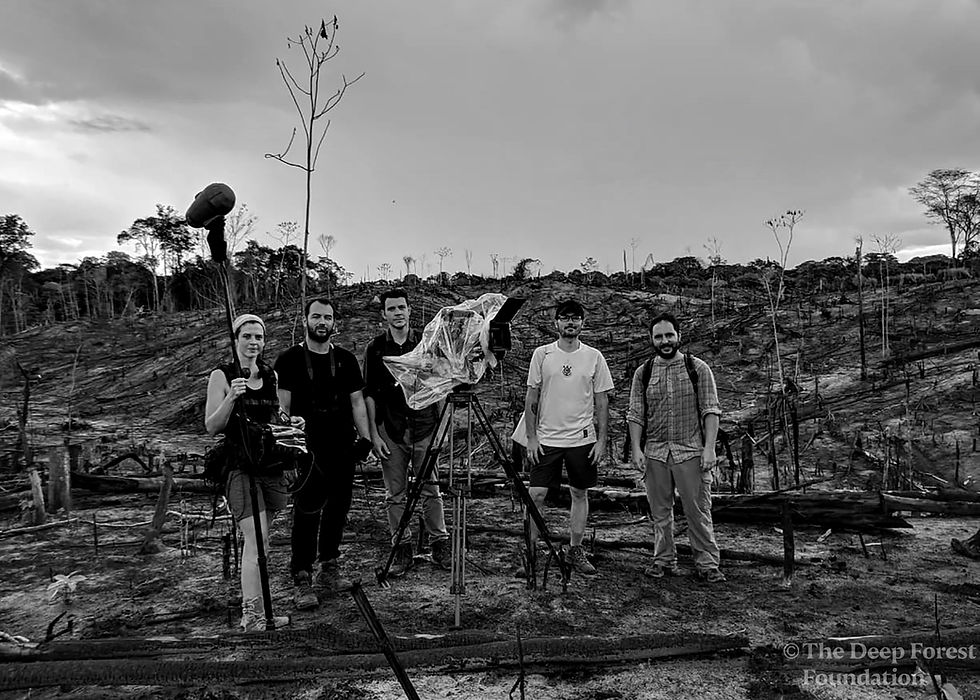The contaminated forest-mining in the Amazon
- Rich D'Amaru
- Oct 18, 2019
- 3 min read
by Marilena Altenfelder and Thiago Cardoso

A big threat to the Amazon and its peoples is gaining strength. At the same time as deforestation grows terribly under the complacent and irresponsible smiles of the politicians, mining activity gains strength and support.
With the Bolsonaro administration, Brazil has become a sinister example of policies aimed at devastating the Amazon. Allied with prospectors and the mining sector, the Brazilian government encourages the expansion of unimpeded mining throughout the biome and proposes the legalization of mining on indigenous lands. The limit is the sky, and the subsoil the profit for few. This is the proposal defended by the current president of Brazil, who repeatedly says that he will “open indigenous lands for agribusiness and mining”.
This political position is a radical continuation of an ecocidal project that sees the Amazon as a demographic void, as an empty and lifeless land, a frontier to be explored. Such a colonial perspective is already generating an increased number of invasions of Indigenous Lands in the region by gold miners. In the beginning of September this year, illegal gold miners had backhoes and equipment destroyed during an inspection of the Brazilian environmental agency, in a forest reserve area. Faced with this “boldness” of environmental institutions, representatives of the miners directly asked the president for protection and freedom to exploit. The criminals were attended and listened to by the government.

Mining in Indigenous Lands is currently not permitted by the Brazilian Federal Constitution and even if it were, its impact would be immeasurable. Advocates argue that industrial mining generates “development,” with jobs and taxes, as well as tackling current irregularities such as police corruption, murders, and river contamination.
However, this position is challenged by academic researchers, environmentalists and indigenous leaders along with the Brazil’s Indigenous People Articulation (Apib), the country's main indigenous organization. It is argued, also based on previous experience, that mining puts communities and forests at risk. In most cases the mining activity occurs under conditions analogous to slavery, promotes deforestation, land invasions, prostitution, disease and contamination of the rivers with mercury and other contaminants.
Another point of concern is the government's real ability to control gold miners and mining companies, that is if the government was interested in acting in accordance with the laws. Alessandra Korap, a female Munduruku leader, states that: "It is not the mining that will support us and the authorities will not be able to inspect the activities. They cannot even inspect outside the indigenous areas". Marcio Santilli, a Brazilian environmentalist, argues that there are positive social and environmental impacts arising from projects or mitigation of impacts developed by some companies, but there are no examples of programs that have promoted good social and environmental results on a scale equivalent to the impacts they have caused.
The debate on the topic is urgent: A study by the Amazon Geo-Referenced Socio-Environmental Information Network (Raisg)[1] last year pointed to the existence of 2.312 illegal mining points in six of the nine countries of the Legal Amazon and hundreds of requests for prospect and mining in the Amazon.
One of the most brutal examples is the case of the gold miners’ invasion and genocide on Yanomami lands. The land of the Yanomami indigenous people, the largest Brazilian indigenous land, home to about 23.000 people, has estimated about 10-15.000 illegal miners who mainly exploit gold. According to a report from BBC News Brazil, exports of this gold are almost exclusively destined for India and feeds a powerful jewelry industry in that country. In 2016, a study by the Oswaldo Cruz Foundation (Fiocruz) and the Socio-Environmental Institute (ISA) revealed that in some Yanomami villages, the rate of people contaminated with mercury reaches 92%.
Mercury contamination of rivers is also recorded among the Munduruku, inhabitants of the Tapajós River (in Pará). The use of mercury in gold mining to facilitate the agglutination of gold grains accumulates along the entire food chain, contaminating fish and those who eats them. In humans, mercury poisoning can cause neurological damage. In addition, the opening of mines has been generating serious social conflicts in the region.

Another place of strong pressure is the Xingu region where the Juruna and Arara peoples live. At the so-called “Big Bend of the Xingu River”, near the devastating Belo Monte hydroelectric power plant, there are applications for authorization to gold mining by Canadian mining company Belo Sun, which may open the largest gold mine in Brazil. Journalist Eliane Brun has been warning of what will be: "the official burial of the Big Bend [of the Xingu River] under tons of toxic waste."
Indigenous peoples, scientists and environmentalists have been drawing attention to the risks of mining activities in the Amazon and the serious risks this presents to the health of the inhabitants of this region and for the ecosystems. In Brazil, this alert goes in one ear and out the other. The powerful are deaf to the diversity of life and well alert to profit.



Comments